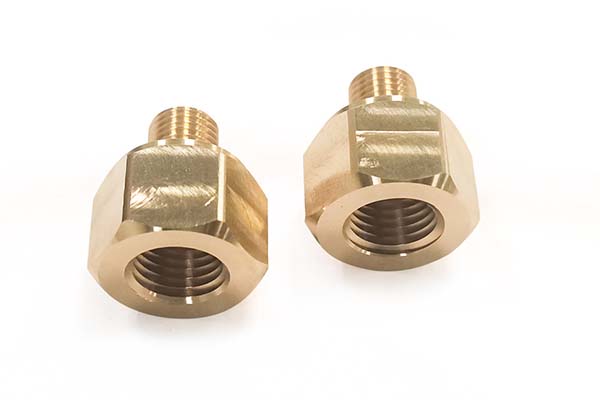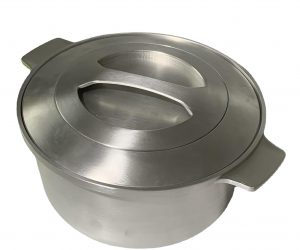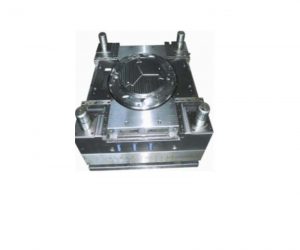1. Introduction to Prototyping Manufacturing
1.1 What is Prototyping Manufacturing?
Prototyping manufacturing, a pivotal process in modern product development, refers to the creation of physical or digital product models using advanced technologies like 3D printing, CNC machining, and rapid tooling. It serves as a bridge between abstract design concepts and large - scale production, enabling the early validation of a product's functionality, ergonomics, and manufacturability.
For instance, in the automotive industry, before mass - producing a new car model, manufacturers first create prototypes. These prototypes are used to test various aspects such as the aerodynamics of the car's body (by measuring wind resistance in a wind tunnel), the functionality of the engine and transmission systems, and the comfort and usability of the interior for the driver and passengers.
2. Core Technologies Driving Prototyping Manufacturing
2.1 Additive Manufacturing (3D Printing)
Additive manufacturing, more commonly known as 3D printing, has emerged as a game - changer in prototyping manufacturing.
Process: At its core, 3D printing is a layer - by - layer material deposition process. It begins with a digital 3D model created using computer - aided design (CAD) software. This model is then sliced into thin cross - sectional layers by specialized software. The 3D printer reads these slices and deposits materials, such as plastics, metals, or composites, layer upon layer until the final three - dimensional object is formed. For example, in fused deposition modeling (FDM), one of the most popular 3D printing techniques, a thermoplastic filament is melted and extruded through a nozzle. The nozzle moves in precise patterns, depositing the molten plastic in layers, which cool and solidify to form the structure. Another technique, selective laser sintering (SLS), uses a high - power laser to sinter powdered materials, such as nylon or metal powders. The laser selectively fuses the powder particles together in each layer, gradually building up the object.
Materials: A wide range of materials can be used in 3D printing. Plastics like acrylonitrile butadiene styrene (ABS), polylactic acid (PLA), and polycarbonate (PC) are commonly used due to their relatively low cost, ease of use, and good mechanical properties. ABS is known for its strength and durability, making it suitable for applications where the prototype needs to withstand some stress, such as in automotive or consumer electronics prototypes. PLA, on the other hand, is a biodegradable plastic, making it an environmentally friendly choice, often used in educational or art - related prototyping.
Metals such as aluminum, titanium, and stainless steel are also being increasingly used in 3D printing, especially in industries like aerospace and medical. Titânio, for example, is highly valued in aerospace applications for its high strength - to - weight ratio. 3D printing allows for the creation of complex titanium parts with internal structures that are difficult to achieve through traditional manufacturing methods. Composites, which combine two or more materials to achieve enhanced properties, are also making their way into 3D printing. These can include combinations of plastics with carbon fibers or glass fibers to increase strength and stiffness. Additionally, biocompatible materials are being developed for 3D printing in the medical field, such as materials used to create custom - fit prosthetics or tissue engineering scaffolds.
Advantages: One of the most significant advantages of 3D printing in prototyping is rapid iteration. Design changes can be made quickly in the digital model, and a new prototype can be printed in a relatively short time. This allows designers and engineers to test multiple design concepts and make improvements rapidly, reducing the overall product development time. For example, a startup developing a new smartphone accessory can quickly print different prototypes of the design, test them for functionality and user - friendliness, and make design adjustments within a matter of days.
3D printing also generates minimal waste compared to traditional manufacturing methods. Since the material is added layer by layer only where it is needed, there is far less material waste compared to subtractive manufacturing processes like CNC machining, which remove large amounts of material from a solid block.
Moreover, 3D printing offers unparalleled design freedom. Complex geometries, such as internal channels, lattice structures, and organic - shaped components, can be easily created. These complex designs can lead to improved product performance. For instance, in the design of heat sinks for electronic devices, 3D - printed lattice structures can provide enhanced heat dissipation while reducing the weight of the component.
2.2 Subtractive Manufacturing (CNC Machining)
Subtractive manufacturing, with CNC machining being a prominent example, has long been a staple in the manufacturing industry and continues to play a crucial role in prototyping.
Process: CNC machining is a precise material removal process. It starts with a solid block of raw material, which can be metal, wood, or a high - strength polymer. Pre - programmed computer software controls the movement of various cutting tools, such as mills, lathes, and drills. These tools remove material from the workpiece in a highly precise manner according to the digital design specifications. For example, in a milling operation, a rotating cutting tool with multiple teeth moves along different axes (X, Y, and Z in a 3 - axis CNC machine) to remove material from the surface of the workpiece, gradually shaping it into the desired form. In a lathe operation, the workpiece rotates while a cutting tool moves in a controlled manner to create cylindrical or conical shapes, such as shafts or bushings.
Materials: Metals are a primary choice for CNC machining in prototyping, especially when high strength and durability are required. Aluminum is widely used due to its relatively low density, high strength - to - weight ratio, and good machinability. It is often used in aerospace and automotive prototypes for components like engine parts and structural components. Aço, including stainless steel, is also popular for its high strength and corrosion resistance. Stainless steel is commonly used in prototypes for medical devices, food processing equipment, and marine applications.
Wood is another material used in CNC machining, particularly for creating prototypes of furniture, decorative items, or artistic pieces. High - strength polymers such as polyetheretherketone (PEEK) are also suitable for CNC machining. PEEK is valued for its excellent mechanical properties, high - temperature resistance, and chemical resistance, making it useful in prototyping components for industries like aerospace, automotive, and oil and gas.
Advantages: The precision of CNC machining is one of its greatest strengths. It can achieve tolerances as tight as ±0.01mm, which is crucial for creating functional prototypes, especially in industries where exact dimensions are critical, such as aerospace and medical device manufacturing. For example, in the production of a prototype for a surgical instrument, the precise dimensions ensured by CNC machining are essential for the instrument's proper function and safety.
CNC - machined prototypes also offer high durability. The solid - state nature of the raw materials and the precision of the machining process result in components that can withstand significant mechanical stress and environmental conditions. This makes them suitable for testing in real - world scenarios, allowing engineers to accurately assess the performance of the prototype under various operating conditions.
2.3 Hybrid Manufacturing
Hybrid manufacturing combines the best of additive and subtractive manufacturing methods to achieve optimized results in prototyping. This emerging approach is gaining traction as it offers a more comprehensive solution to the challenges faced in prototyping.
By integrating additive and subtractive processes, manufacturers can take advantage of the design freedom and rapid iteration of 3D printing while also leveraging the precision and surface finish capabilities of CNC machining. For example, a 3D - printed part with complex internal structures can be further refined using CNC machining to achieve a smoother surface finish and more precise external dimensions. In another scenario, a base structure can be built using additive manufacturing, and then high - precision features, such as threaded holes or tight - tolerance mating surfaces, can be added using subtractive machining.
Hybrid manufacturing can also reduce production time and cost. By using additive manufacturing for the initial build of a part and then selectively applying subtractive processes only where necessary, the overall manufacturing time can be decreased compared to using only subtractive methods. Additionally, it can minimize material waste, as the additive process can build the part with less material overall, and the subtractive process removes only the necessary amount to achieve the final product requirements. This approach is particularly beneficial for prototyping complex parts that require a combination of complex geometries and high - precision features.
3. Choosing the Right Prototyping Manufacturer
3.1 Evaluation Criteria
Selecting the right prototyping manufacturer is a critical decision that can significantly impact the success of your product development project. Here are some key evaluation criteria to consider:
Technical Expertise: A manufacturer with strong technical expertise is essential. Look for certifications such as ISO 9001, which indicates a high - level of quality management in general manufacturing processes. In industries like aerospace, the AS9100 certification is crucial. It demonstrates that the manufacturer meets the stringent quality requirements specific to the aviation, space, and defense sectors. For example, a company certified to AS9100 has proven its ability to manage risks, control processes, and ensure product safety and reliability in a highly regulated environment.
Material knowledge is another aspect of technical expertise. The manufacturer should be well - versed in a wide range of materials relevant to your project. If you are developing a medical device, they should understand biocompatible materials, their properties, and how to work with them to ensure the safety and functionality of the prototype. They should also be able to provide guidance on material selection based on your product's requirements, such as strength, durability, heat resistance, or chemical resistance.
Portfolio: Reviewing a manufacturer's portfolio is like looking at their resume. It gives you insights into their experience and capabilities in your industry. If you are in the automotive industry, check if they have worked on projects related to automotive prototypes, such as engine components, body parts, or interior designs. A manufacturer with a history of successful automotive prototyping projects is more likely to understand the unique requirements of the industry, such as meeting safety standards, ensuring aerodynamic efficiency, and withstanding harsh operating conditions.
Collaboration: Effective collaboration is the glue that holds a successful prototyping project together. Ensure that the manufacturer values transparent communication. They should be able to clearly explain the manufacturing process, timelines, and any potential issues or risks. For example, if there are delays due to material shortages or equipment malfunctions, they should communicate this promptly and provide alternative solutions.
3.2 Yigu Technology’s Approach
At Yigu Technology, we pride ourselves on our comprehensive approach to prototyping manufacturing.
Services: We offer a wide range of services to meet diverse prototyping needs. Our 3D printing services cover various technologies, including FDM, SLA, and SLS. FDM is great for creating functional prototypes quickly and cost - effectively, using materials like PLA and ABS. SLA is ideal for high - precision prototypes with smooth surfaces, often used in jewelry design or small - scale mechanical parts. SLS can produce strong, durable prototypes with complex geometries using materials such as nylon.
Our CNC machining capabilities are top - notch, with state - of - the - art equipment and highly skilled operators. We can work with a variety of materials, from metals like aluminum and steel to high - performance polymers. Whether it's a simple part or a complex, multi - axis component, our CNC machining services ensure high precision and quality.
In addition, we provide post - processing services to enhance the appearance and functionality of prototypes. This can include surface finishing techniques like polishing, painting, and plating to improve the aesthetics and durability of the prototype. We also offer assembly services, ensuring that all components fit together perfectly for a fully functional prototype.
4. Conclusion
In Yigu Technology conclusion, prototyping manufacturing has emerged as an indispensable process in the modern product development landscape. It offers a plethora of advantages over traditional manufacturing methods, revolutionizing the way companies bring their ideas to life.
The core technologies driving prototyping manufacturing, such as additive manufacturing, subtractive manufacturing, and hybrid manufacturing, each have their unique strengths. Additive manufacturing, with its rapid iteration, design freedom, and low - waste production, enables companies to quickly test and refine their product concepts. Subtractive manufacturing, particularly CNC machining, provides the precision and durability required for functional prototypes in industries with high - tolerance requirements. Hybrid manufacturing combines the best of both worlds, offering optimized solutions for complex parts.
When compared to traditional manufacturing, prototyping manufacturing is far more cost - effective, especially in terms of tooling costs, material waste, and prototyping time. It also provides greater design flexibility, allowing for easy customization and the creation of complex shapes that are difficult to achieve with traditional methods.
Choosing the right prototyping manufacturer is crucial. By evaluating criteria such as technical expertise, portfolio, and collaboration capabilities, companies can ensure a successful prototyping project. Yigu Technology, with its wide range of services, strong track record, and commitment to customer satisfaction, is well - positioned to be a reliable partner in prototyping manufacturing.


